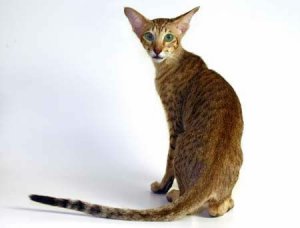
All iLive content is medically reviewed or fact checked to ensure as much factual accuracy as possible.
We have strict sourcing guidelines and only link to reputable media sites, academic research institutions and, whenever possible, medically peer reviewed studies. Note that the numbers in parentheses ([1], [2], etc.) are clickable links to these studies.
If you feel that any of our content is inaccurate, out-of-date, or otherwise questionable, please select it and press Ctrl + Enter.
Diabetes in cats
Last reviewed: 04.07.2025

Diabetes mellitus in cats is a commonly diagnosed disease in cats that eventually affects all organs. It develops in about one in 400 cats. It is a consequence of inadequate insulin production by the beta cells of the pancreas or an inadequate response of the cells to insulin. Insulin is released directly into the bloodstream. It acts on the cell membranes, allowing glucose to enter the cells, where it is converted into energy. Without insulin, the body cannot use glucose. This leads to high blood sugar levels (hyperglycemia). In cats with diabetes, excess glucose is removed by the kidneys, which causes frequent urination. There is a need to compensate for the increased urination by drinking more water.
Pancreatitis, hyperthyroidism, drugs like megestrol acetate (Megace), and some corticosteroids can cause or mimic diabetes in cats. Obesity is a predisposing factor for all cats. Burmese cats may also have a genetic predisposition. Males are at twice the risk of females. Neutered males over 10 years of age and weighing more than 15 pounds are at greatest risk.
Glycosuria is sugar in the urine. If the urine test is positive for glucose, diabetes is suspected. However, some cats have high levels of glucose in their urine or blood due to stress, so a repeat test may be needed to confirm the result. Renal tubular dysfunction, such as that caused by antifreeze poisoning, can also cause high glucose in the blood and urine.
Ketones (the end product of rapid or excessive breakdown of fatty acids) form in the blood of diabetics due to the inability to metabolize glucose. High levels of them lead to a condition called ketoacidosis. It is characterized by acetone breath (a sweet smell similar to nail polish remover), frequent shortness of breath, and eventually diabetic coma.
In the early stages of diabetes, the cat tries to compensate for the inability to metabolize blood glucose by eating more food. Later, the appetite decreases as a result of poor nutrition. Accordingly, signs of early diabetes include frequent urination, drinking large amounts of water, a large appetite, and unexplained weight loss. Laboratory tests reveal glucose and possibly ketones in the urine, as well as high blood glucose levels.
In more severe cases, loss of appetite, vomiting, weakness, acetone breath, dehydration, difficulty breathing, lethargy, and eventually coma are seen. Unlike dogs, diabetic cats rarely develop cataracts. Muscle weakness, which is usually seen in the cat walking on its heels rather than its toes, is often seen if glucose regulation is poor.
There are three types of diabetes in cats. Cats with type I diabetes are insulin-dependent and need daily insulin injections because the beta cells in their pancreas do not produce enough insulin. In cats with type II diabetes, the pancreas may produce enough insulin, but the cat’s body does not use it properly. This is the most common type of diabetes in cats. Some of these cats may also require insulin injections, while others may receive pills to control their blood glucose levels and may need dietary changes. About 70% of all cats with diabetes require at least a small amount of insulin.
The third type is known as transient diabetes mellitus. There are cats that are diabetic and initially require insulin injections, but after a while their bodies adjust and they can do without insulin injections, especially if they are put on a high protein, low carbohydrate diet.
